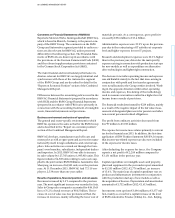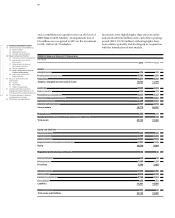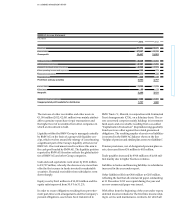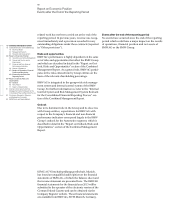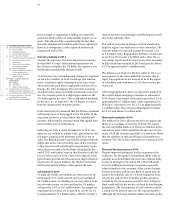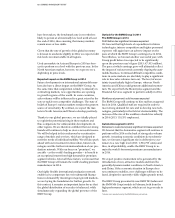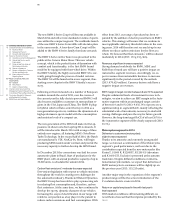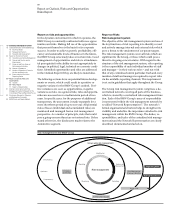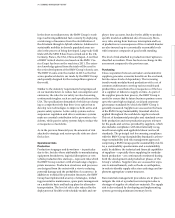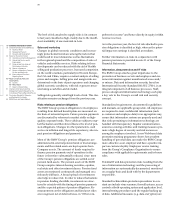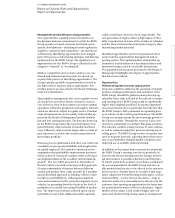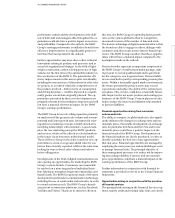BMW 2013 Annual Report Download - page 69
Download and view the complete annual report
Please find page 69 of the 2013 BMW annual report below. You can navigate through the pages in the report by either clicking on the pages listed below, or by using the keyword search tool below to find specific information within the annual report.
69 COMBINED MANAGEMENT REPORT
Group risk management is geared towards meeting
the following three criteria: effectiveness, usefulness
and completeness. One of the principal focuses in
2013 was to ensure completeness. In this context, risk
catalogues containing lists of potential risks were
drawn up in collaboration with the Network Repre-
sentatives in order to facilitate the identification of
risks within each area of responsibility and / or each
sub-network, thus making a meaningful contribution
to ensuring completeness and highlighting any over-
arching risk profiles. The various risk catalogues have
been integrated in a newly developed IT tool, which
enables optimal recording and reporting of the risks
and countermeasures relevant for each network. The
new tool also helps to promote reciprocal networking
and cooperation, ensuring the seamless coordination
of the Group risk management system with the Com-
pliance Committee, the Internal Control System and
the Group Internal Audit.
Risk management process
The risk management process is applied throughout
the Group and comprises the early identification and
penetration of risks, comprehensive analysis and risk
measurement, the coordinated use of suitable manage-
ment tools and also the monitoring and evaluation
of measures in the short and medium term of up to two
years.
Risks reported to the centralised risk management from
the network are firstly presented for review to the Risk
Management Steering Committee, for which Group
Controlling is responsible. After review, the risks are
reported to the Board of Management and to the Super-
visory Board. Significant and going-concern-related
risks are classified on the basis of the potential scale of
impact on the Group’s results of operation, financial
position and net assets. The level of risk is quantified,
taking into account the probability of occurrence and
risk mitigation measures.
The risk management system is tested regularly by the
Internal Audit. By sharing experiences with other com-
panies on an ongoing basis, the BMW Group ensures
that new insights are incorporated in the risk manage-
ment system, thus ensuring continual improvement.
Regular basic and further training as well as information
events throughout the BMW Group, and in particular
within the risk management network, are invaluable
ways
of preparing people for new or additional chal-
lenges with regard to the processes in which they are in-
volved.
As a supplement to comprehensive risk management,
managing the business on a sustainable basis also repre-
sents one of the Group’s core corporate principles.
Risks and opportunities related to sustainability issues
are discussed by the Sustainability Committee.
Strate-
gic options and measures open to the BMW Group
are put
forward to the Sustainability Board, to which all
members of the Board of Management belong. Risk
aspects discussed at this level are integrated in the work
of the group-wide risk network. The composition of
the
Risk Management Steering Committee on the one
hand and the Sustainability Committee on the other
ensures that risk and sustainability management are
closely coordinated.
Risk measurement
In order to determine which risks can be considered to
be significant in relation to the results of operations,
financial position and net assets of the BMW Group,
to
identify changes in key performance indicators and
to measure their potential earnings impact, all identified
risks are classified on the basis of the following table.
The amount of the risks takes account of both its impact
(net of appropriate countermeasures) and the likelihood
of occurrence in each case.
The overall earnings impact based on the assumption
that the risk will actually take place is sub-divided into
the following categories.
Risks
Political and global economic risks
As one of the world’s leading providers of premium
products and services, the BMW Group faces a variety
of major challenges. The world is changing at great
speed, and in a great number of countries individual
mobility remains a key issue in terms of political regu-
lation
and national industrial policy. Changing values
in society are constantly calling for new solutions in
the
field of mobility. Unpredictable disturbances in eco-
nomic interdependencies, together with ever-increasing
competition, may give rise to knock-on reactions that
are practically impossible to predict. The sovereign
debt crisis in the euro region and volatile economic con-
Class Risk amount
Low > €0 – 50 million
Medium > €50 – 400 million
High > €400 million
Class Earnings impact
Low > €0 – 500 million
Medium > €500 – 2,000 million
High > €2,000 million


